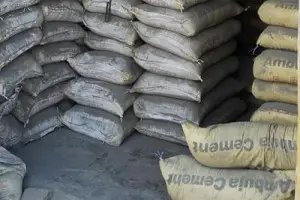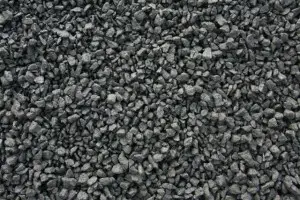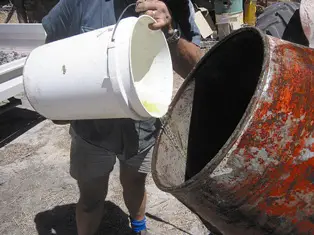For a site engineer, mixing concrete is a routine work during concrete casting. Actually, most of the civil engineers do know well about concrete mixing procedures as it is a basic ground in civil engineering construction works. So, this post on mixing concrete manually is for the civil engineering students and for the newbie civil engineers.
Materials needed for mixing concrete
Concrete is a mixture of four ingredients: Sand, cement, aggregate and water. These need to be mixed together in a specific ratio, depending on the project at hand. The unit for measurement of concrete is cubic feet or cubic meters and one cubic meter equals 27 cubic feet. When you want to mix the ingredients manually, you’ll need a tub made from plastic or metal. However, the most practical way is to use a wheelbarrow or a hand operated portable mixer.

Now, let us come to the materials. Portland cement is easily available in bags of 95 lbs or one cubic foot of material. This is a white powder comprising of lime, silica, iron and alumina. It comes in different grades from I to V, but for construction purposes grade I suffices the purpose. The compressive strength of concrete is determined by the ratio of sand to cement. Concrete made from Portland cement and sand in the ratio of 1:3 will yield concrete having a compressive strength of over 3000 pounds per square inch (PSI.) We need to add water to get a paste or binder that binds all the constituents together.
Related: Advantages of Concrete

Aggregate is crushed rock and classified as coarse, medium and fine. A combination of any two or all three kinds may be used together for certain applications. Most often it should form 3/4th of the volume of concrete. Coarse aggregate reduces the volume of cement required without significantly affecting the strength of concrete but the finish of the surface will be rough. The strength of concrete is inversely proportion to ratio of water to cement and should be less than 0.60, meaning that weight of water should not exceed 60% of cement. A higher ratio result to having a more fluid mix that is liable to lack strength and quality of surface.

Preparing mixture
Having gathered all the materials it is time to mix them all together. First, you thoroughly mix all the dry items together: 1 part cement, 2 parts sand and 3 parts gravel. Mix these together using a sturdy hoe. Mixing may be done in a wheelbarrow or tub. Of course, it is a lot more convenient to use wheelbarrow.
Adding water
Add small volumes of water at a time and keep mixing with a shovel. For even distribution of moisture you should thrust the shovel beneath the pre-mix concrete and fold it over on itself.

Related: Different types of concrete vibrators
If the concrete is mixed appropriately, its consistency is comparable to cookie dough. You can check the consistency by using the blade of shovel like a knife and try cutting a shallow channel through the surface of the pre-mix concrete:
- If it is too dry, the channel walls will be flaky, so you need to add more water and mix concrete some more.
- If it is too wet, the channel fills in with water, so you need to add more pre-mix concrete and continue “stirring.”
You’ll appreciate that mixing concrete by hand is easy for any DIY kind of a project like deck footings, fence post footings and small concrete pads.
